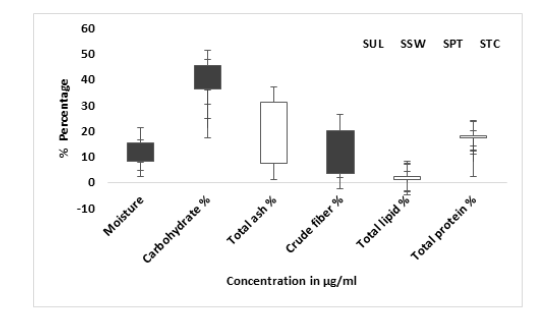Efficacy of incorporating spent seaweeds in aqua feeds as a nutritional source
DOI:
https://doi.org/10.17762/sfs.v8i1.65Keywords:
Spent seaweeds, Anti-nutritional, BiochemicalsAbstract
Spent biomass of different seaweeds such as Sargassum wightii, Turbinaria conoides, Padina tetrastomata and Ulva lactuca were evaluated for the nutritional benefits in aqua feeds. Basic nutritional value, of seaweeds contains a number of pigments, defensive and storage compounds, and secondary metabolites that could have beneficial effects in farmed fish. Only a small fraction of algal species have so far been investigated as potential components in finfish diets and a number of knowledge gaps that current research has yet to be addressed. The effects of seaweed supplementation most relevant in aquaculture include stimulation of growth performance, enhancement of feed utilization efficiency, improvement of nutrient assimilation, and improvement of fatty acid profile (increase in long chain n-3 polyunsaturated fatty acids) in muscle. Spent seaweeds shows enriching nutritive values such as protein, vitamin, mineral, essential amino acids, essential fatty acids and also improves the digestibility of spent seaweed based feeds. The anti-nutritional factors in spent seaweed were also recorded as low in Sargassum wightii phenolics (1.60±0.05) tannins (3.20±0.43), in Turbinaria conoides, saponins (0.83±0.15), in Ulva lactuca Oxalates (0.13±0.02) Phytate (16.54±0.23). Hence, the spent residues from industries, and seaweed spent biomass generated in the laboratory after pigment extraction were considered to be a good source of biomass for aqua feed production.










